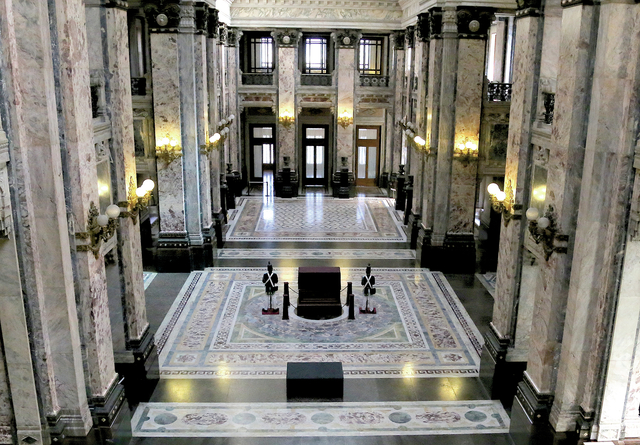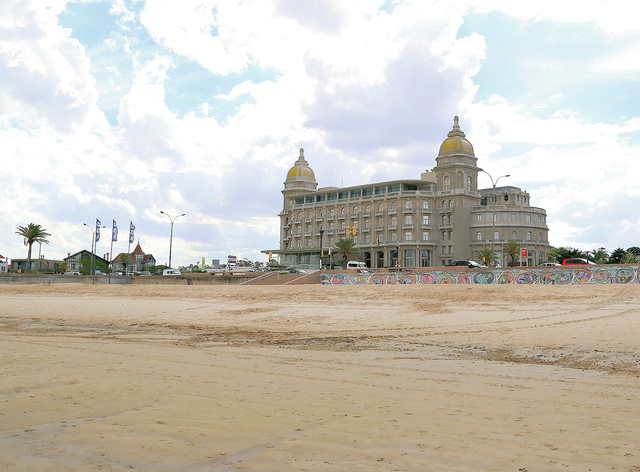MONTEVIDEO, Uruguay — Uruguay’s capital city, Montevideo, might not be as well-known to international travelers as some of Latin America’s other destinations. But there’s plenty here to see and do, and it’s a relatively short hop and worthy side trip from Buenos Aires.
MONTEVIDEO, Uruguay — Uruguay’s capital city, Montevideo, might not be as well-known to international travelers as some of Latin America’s other destinations. But there’s plenty here to see and do, and it’s a relatively short hop and worthy side trip from Buenos Aires.
Laid-back and friendly, Montevideo has a mellow vibe. Experience it as you savor a tasty chivito (steak sandwich) at a sidewalk cafe, or on a sunny stroll along a wide sandy beach. Gaze over the rooftops of the old city at sunset and take in the oddly appealing mix of elegant buildings rubbing stone shoulders with squat, concrete blocks.
Here are a few suggestions on making the most of your visit.
WHAT’S NEW
The renovated Mercado Agricola, 2220 Jose L. Terra, has everything from asado (barbecued meat) to gelato to hand-crafted gifts. It can be less crowded than the more-famous Mercado del Puerto and is home to cafes and a small brewery. Open daily 9 a.m.-10 p.m.
Another rejuvenated classic is the Sofitel Casino Carrasco and Spa. Formerly known as the Hotel Carrasco, the beachfront luxury hotel opened in 1921. Albert Einstein stayed here in its early years and the Rolling Stones were recent guests. Reopened in 2013 following a thoughtful renovation, the hotel’s rooms start at around $250.
A relative newcomer to Montevideo’s extensive museum scene is the contemporary art museum, Espacio de Arte Contemporaneo, 1930 Arenal Grande. Here the setting may be as interesting as the exhibits: It’s housed in what was a 19th-century prison. Open Wednesday-Saturday, 2 p.m.-8 p.m.; Sunday, 11 a.m.-5 p.m. Free.
CLASSIC ATTRACTIONS
Although it can get busy, the Mercado del Puerto in the Ciudad Vieja (old city) is worth a visit. A popular spot for asado is El Palenque.
For a dose of history, try the Legislative Palace. Highlights include uniformed guards watching over the glass case containing the national constitution. Open Monday-Friday. Visits by guided tour only (available in English) at 10:30 a.m. and 2:30 p.m. Enter from Avenida General Flores, $3.
Plaza Independencia (Independence Square), at the beginning of Avenida 18 de Julio is a good place to take photographs. You’ll find the Puerta de la Ciudadela (Citadel Gate), a remnant of walls that once surrounded the Ciudad Vieja, and a statue dedicated to national hero Gen. Jose Gervasio Artigas.
Not far from the square is Teatro Solis at the corner of Reconquista and Bartolemeo Mitre, which opened in 1856. In addition to performances you can take a guided tour, see exhibitions or get something to eat.
TIPS
Uruguayans eat dinner late, as late as 11 p.m. on weekends, but you can find places ready to feed you by 8 p.m. (though it will be quiet if you’re that early). A good place in the old city is Dueto, 1386 Bartolome Mitre, which serves innovative food with a fixed price menu of around $25.
If you’re staying in the old city, a good choice is Alma Historica, 1433 Solis, a new boutique hotel in tree-shaded Plaza Zabala. A blend of modern convenience and one-of-a-kind antique furnishings, the hotel has a hot tub-equipped rooftop terrace. Rooms start at $160. For places close to the beach look in the Pocitos and Carrasco neighborhoods.
Taxis are plentiful and an easy way of getting around. As always, ask for the rate before you get in.
The city feels relatively safe but be alert, especially at night.
HANGING OUT
The Rambla runs about 17 miles along Montevideo’s coastline. Take a stroll or rent a bike to explore the wide, sandy beaches.
Walking around the old city is the best way to take in the city’s mix of architecture; the pedestrian thoroughfare, Peatonal Sarandi, is the main drag and will take you past art galleries, shops and street stalls. Check out the traditional calabash gourds and metal straws used to imbibe yerba mate (ma-TAY). The drink is hugely popular and it’s common to see people walking with gourd in hand and a vacuum flask of hot water tucked under their arm.
On Sunday mornings you’ll find an open air market on Tristan Narvaja and surrounding streets, starting near Avenida 18 de Julio.
Places near Montevideo worth a visit include the Atlantic resorts of Punte del Este and the somewhat quieter Jose Ignacio.
Uruguay is an emerging wine country known for tannat, a red wine. Day trips can be arranged to wineries near Montevideo and beyond. A new addition to the wine scene is Bodega Garzon, about a 2-1/2 hour drive from the capital, which is making a reputation for whites as well as reds with a sauvignon blanc and albarino. The hilltop winery, including a 7,500-square-foot living roof, has panoramic views of surrounding vineyards and an elegant restaurant.
Nearby attractions range from balloon rides to biking to taking part in the olive harvest, usually from March to May. Worth checking out in the small town of Garzon is the Hotel and Restaurant Garzon by Francis Mallmann, one of South America’s most celebrated chefs and a master of asado.


